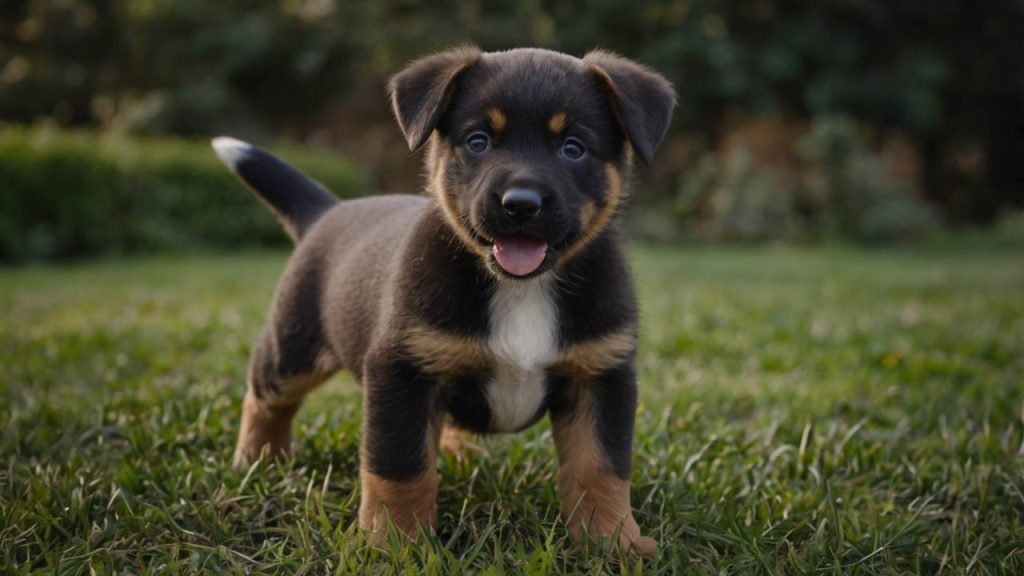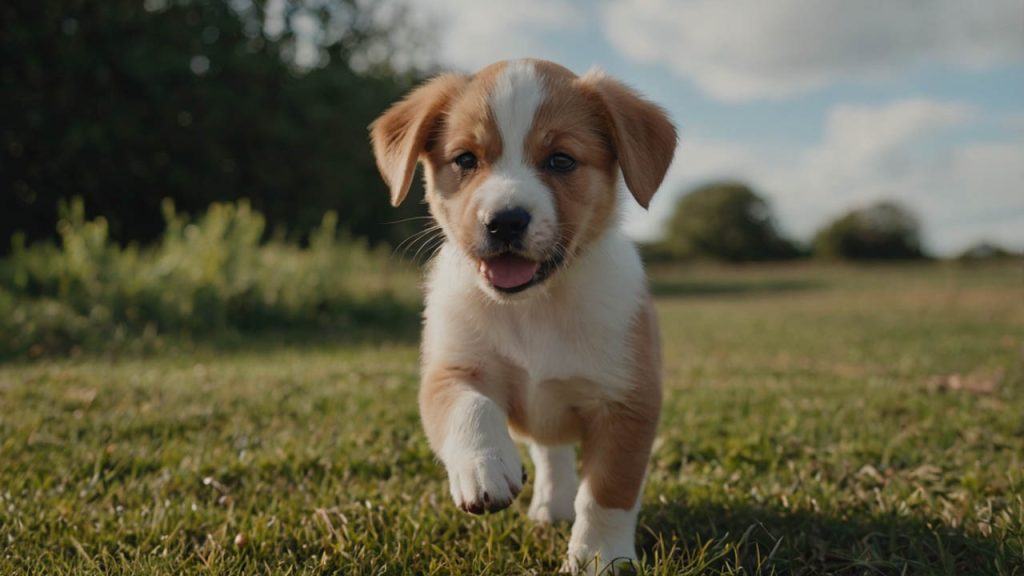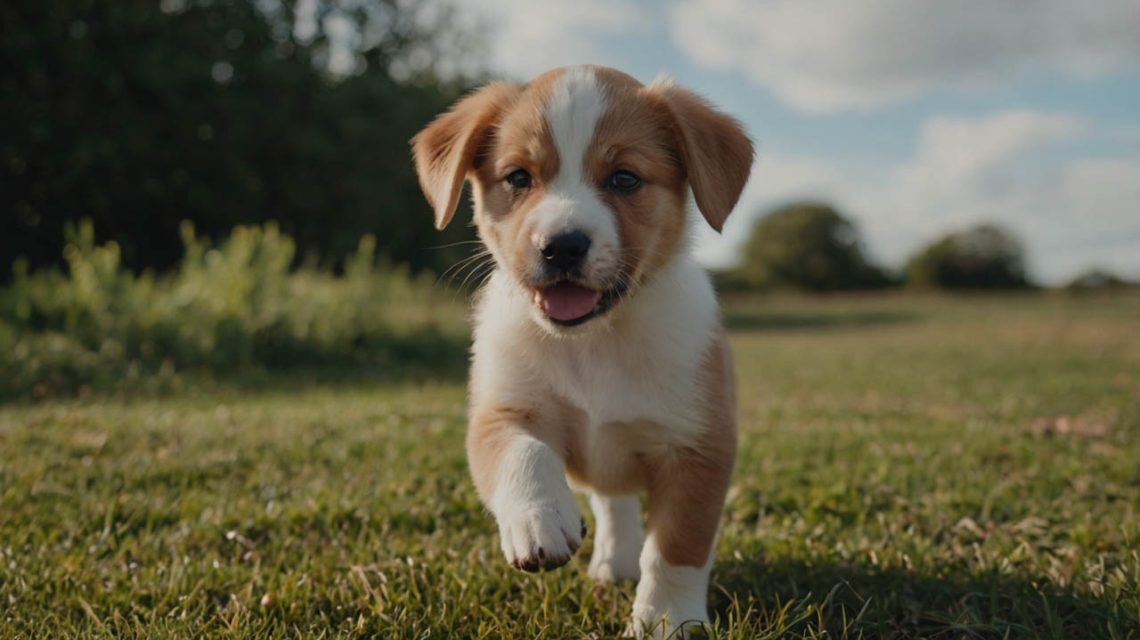Introduction: Solving Your Puppy’s Nipping Problem
Understanding how to stop puppy nipping is crucial for new puppy owners who face those sharp little teeth multiple times daily during the early months of their pet’s life. According to the International Association of Animal Behavior Consultants, nipping behavior affects 100% of puppies between 3-6 months of age, making it one of the most universal challenges in puppy raising. Moreover, research from veterinary behaviorists indicates that puppies who don’t learn appropriate mouth control before 18 weeks of age are three times more likely to develop problematic biting behaviors as adults, emphasizing the critical importance of early intervention.
The urgency of learning how to stop puppy nipping becomes apparent when considering that those needle-sharp puppy teeth can cause painful wounds, particularly to children who naturally interact at the puppy’s level. Studies published in the Journal of Veterinary Behavior demonstrate that consistent nipping training during the critical socialization period (3-14 weeks) can eliminate inappropriate nipping within 10-14 days when proper techniques are applied consistently. Furthermore, addressing nipping early prevents the behavior from escalating into more serious biting that could result in rehoming, legal issues, or euthanasia.
Successfully implementing strategies to curb nipping requires understanding the difference between normal developmental mouthing and problematic nipping, recognizing various triggers, and applying age-appropriate training methods consistently. While nipping serves important functions in puppy development including exploration, play, and communication, teaching appropriate boundaries ensures your puppy grows into a well-mannered adult dog who understands gentle interaction. Therefore, this comprehensive guide provides immediate solutions, long-term strategies, and troubleshooting advice to help you effectively stop your puppy’s nipping behavior.
Why Understanding How to Stop Puppy Nipping Matters
Natural Development and Nipping Behavior
Before implementing how to stop puppy nipping techniques, recognizing why puppies nip helps address the behavior appropriately. Puppies explore their world primarily through their mouths, similar to how human babies use their hands to investigate objects. Subsequently, everything from furniture legs to human ankles becomes a target for investigation through gentle (and not-so-gentle) nipping.
Play behavior naturally involves nipping among puppies as they learn crucial social skills through interaction with littermates. In their natural pack environment, puppies learn bite inhibition when siblings yelp and stop playing after hard nips. This feedback system teaches puppies to moderate their jaw pressure for continued social engagement. Research indicates that puppies separated from litters before 8 weeks often exhibit more severe nipping problems due to missed learning opportunities.
Teething intensifies nipping behaviors between 3-6 months as deciduous teeth fall out and adult teeth emerge. During this uncomfortable period, puppies experience significant gum soreness and seek relief through increased chewing and nipping. Studies show that teething puppies may nip up to 80% more frequently than non-teething puppies, making this phase particularly challenging for owners.

Consequences of Unaddressed Nipping
Learning how to stop puppy nipping early prevents serious long-term consequences that extend beyond temporary discomfort. Adult dogs who never learned proper mouth control pose significant liability risks, with insurance claims for dog bites averaging $49,000 according to industry data. Furthermore, many dogs are surrendered to shelters or face euthanasia due to biting problems that originated from unaddressed puppy nipping.
Social development suffers when nipping continues unchecked, as people naturally avoid interacting with nippy puppies. This avoidance limits crucial socialization opportunities during the critical developmental period, potentially leading to fear, anxiety, and aggression issues. Children particularly may develop lasting fears of dogs after experiencing painful puppy nipping, affecting family dynamics permanently.
The human-animal bond weakens when nipping persists, transforming what should be joyful interactions into stressful encounters. Simple activities like petting, grooming, or playing become battles of wills, diminishing the pleasure of puppy ownership. Moreover, visitors may refuse to interact with nippy puppies, isolating both pets and owners socially.
How to Stop Puppy Nipping: Immediate Solutions
The Yelp and Ignore Technique
The most effective immediate method for how to stop puppy nipping mimics natural canine communication patterns. When your puppy nips, emit a high-pitched “yelp” or “ouch” to signal that the nip hurt, then immediately withdraw all attention by turning away or leaving the room for 20-30 seconds. This response replicates how littermates react to excessive nipping, teaching through natural consequences.
Consistency across all family members proves essential for this technique’s success. Everyone must respond identically to nipping, using the same verbal cue and withdrawal duration. Research demonstrates that puppies receiving consistent responses learn to reduce nipping intensity within 3-5 days, while inconsistent responses can actually increase nipping frequency by creating an unpredictable game.
Timing your response correctly maximizes effectiveness when implementing this technique. The yelp must occur within 1-2 seconds of the nip to create clear cause-and-effect understanding. Returning too quickly after withdrawal may inadvertently reward the puppy with attention, while waiting too long breaks the learning connection between behavior and consequence.
Redirection to Appropriate Targets
Providing suitable alternatives forms a cornerstone of how to stop puppy nipping strategies. Keep appropriate chew toys within immediate reach throughout your home, instantly substituting them when your puppy attempts to nip hands, feet, or clothing. This redirection satisfies natural chewing instincts while teaching clear boundaries about acceptable nipping targets.
Toy selection significantly impacts redirection success rates. Puppies often prefer different textures during various developmental stages—soft rubber toys for sore teething gums, rope toys for tugging urges, and harder nylon bones for intense chewing needs. Rotate toys every 2-3 days to maintain novelty and interest, preventing boredom that leads back to inappropriate nipping.
Enthusiastic praise and rewards for appropriate toy engagement reinforce the redirection. When puppies choose toys over human skin, immediately provide verbal praise, treats, or brief play sessions. This positive reinforcement strengthens the association between appropriate chewing choices and pleasant outcomes, naturally decreasing human-directed nipping.
How to Stop Puppy Nipping During Play
Managing Arousal and Excitement
Controlling excitement levels during play proves crucial when learning how to stop puppy nipping effectively. Monitor arousal indicators including dilated pupils, rapid panting, inability to follow commands, and escalating roughness. Implement mandatory calm-down breaks every 1-2 minutes during play sessions, preventing the overexcitement that leads to frenzied nipping.
Structured play sessions with clear boundaries teach self-control naturally. Use consistent start cues like “let’s play” and stop cues like “all done,” helping puppies understand activity parameters. When teeth touch skin, immediately say “too bad” and cease play for 30-60 seconds. Resume only after your puppy settles completely, reinforcing that calm behavior continues fun while nipping stops it.
Game selection reduces nipping opportunities while providing appropriate stimulation. Choose fetch, hide-and-seek with toys, or training games that maintain distance between hands and teeth. Avoid wrestling, chase games, or rough hand play that blur boundaries about appropriate mouth use on humans. Studies show puppies engaged in structured games exhibit 60% less nipping than those playing unstructured rough games.
Teaching Gentle Mouth Behaviors
Implementing how to stop puppy nipping includes teaching controlled mouth pressure for unavoidable contact situations. The “gentle” or “easy” command helps puppies learn to moderate jaw pressure when taking treats or interacting with hands. Start with hard treats in closed fists, only releasing when puppies lick or mouth softly without using teeth.
Progressive training builds reliable gentle behaviors over time. Initially reward any reduction in nipping pressure, gradually requiring softer and softer mouth contact for rewards. Practice 5-10 times daily during regular treat-giving opportunities. Within 2-3 weeks of consistent practice, most puppies can take treats from open palms without any teeth contact.
Hand feeding portions of meals provides multiple daily training opportunities. Deliver kibble piece by piece, requiring increasingly gentle taking before releasing food. This transforms necessary feeding into nipping prevention practice, accelerating learning through frequent repetition. Research indicates hand-fed puppies develop superior bite inhibition compared to bowl-fed puppies.
Age-Specific Strategies: How to Stop Puppy Nipping
8-10 Week Old Puppies
Very young puppies require modified approaches when learning how to stop puppy nipping due to their developmental immaturity. At this age, recently separated from littermates, puppies need gentle guidance rather than firm corrections. Focus on soft redirection to appropriate toys and providing supervised socialization with vaccinated, gentle adult dogs who model appropriate interaction.
Sleep management prevents overtired nipping common in young puppies. Puppies this age require 18-20 hours of sleep daily, and exhaustion manifests as increased nipping and inability to settle. Enforce regular nap schedules every 1-2 hours of wakefulness using crates or quiet spaces, preventing the frantic nipping that occurs when puppies become overstimulated.
Handling exercises build tolerance while teaching nipping control. Gently touch paws, ears, mouth, and tail while providing continuous treat streams. If nipping occurs during handling, freeze movement completely until release, then continue. This teaches that stillness and gentleness maintain pleasant interaction while nipping stops it.
3-6 Month Old Puppies
Peak teething age requires specialized how to stop puppy nipping techniques addressing physical discomfort. Provide frozen washcloths, ice cubes, frozen carrot sticks, or specialized teething toys to numb sore gums naturally. Puppies with adequate teething relief show 70% less inappropriate nipping than those without proper outlets.
Consistency becomes absolutely critical as puppies test boundaries during adolescent development. All family members must enforce identical rules using the same commands, consequences, and rewards. Mixed messages during this period can establish nipping patterns persisting into adulthood, requiring professional intervention to resolve.
Training class enrollment reinforces home training through peer interaction. Puppy kindergarten provides controlled environments where puppies learn appropriate play from age-matched peers. Professional trainers identify concerning patterns early, preventing escalation into serious biting problems. Studies show puppies attending classes display significantly better bite inhibition than home-trained-only puppies.

Advanced Techniques: How to Stop Puppy Nipping
Positive Reinforcement Methods
Modern understanding of how to stop puppy nipping emphasizes reward-based training producing faster, more reliable results than punishment. Capture and reward calm behavior around hands throughout the day, increasing frequency of desired gentle interactions. Mark the exact moment puppies interact without nipping using clickers or verbal markers, followed immediately by high-value rewards.
Differential reinforcement teaches puppies that different behaviors yield different outcomes predictably. Nipping results in immediate play cessation and attention withdrawal, while gentle interaction brings treats, praise, petting, and continued engagement. This clear contrast helps puppies make independent behavioral choices favoring rewarded actions.
Shaping allows gradual progress toward ideal behavior without frustration. Initially reward any reduction in nipping pressure, progressively requiring gentler contact for reinforcement. Break ultimate goals into tiny achievable steps, maintaining motivation while building precise behavioral control. Most puppies achieve reliable gentle-mouth behaviors within 3-4 weeks using systematic shaping.
Environmental Management Strategies
Successful how to stop puppy nipping programs incorporate environmental modifications preventing rehearsal of unwanted behaviors. Use baby gates strategically to control puppy access, preventing ankle-ambush opportunities in high-traffic areas. Tether puppies to furniture with lightweight leashes during supervision, preventing chase-and-nip games while maintaining interaction ability.
Strategic toy placement ensures alternatives remain constantly available for redirection. Position appropriate chew toys in every room, making substitution immediate and consistent. Create toy stations near common nipping locations like doorways, couches, and play areas. This environmental enrichment satisfies natural chewing instincts while protecting humans from puppy teeth.
Clothing modifications reduce nipping triggers during training phases. Avoid loose, flowing garments that trigger prey drive and grabbing instincts. Remove tempting accessories like shoelaces, scarves, or dangling jewelry. Wear closed-toe shoes protecting feet from ankle-level attacks. These temporary adjustments reduce nipping opportunities while training progresses.
Common Mistakes When Learning How to Stop Puppy Nipping
Ineffective Response Patterns
Many owners accidentally reinforce nipping when attempting how to stop puppy nipping through inappropriate responses. Pushing puppies away often becomes an exciting game, encouraging more vigorous nipping. Running from nipping puppies triggers chase instincts, escalating the behavior into predatory sequences. Loud scolding may excite rather than deter some puppies, interpreting yelling as participation in rough play.
Physical punishment including hitting, alpha rolls, or muzzle holding often worsens nipping problems. These methods can trigger fear-based aggression, damage trust, and teach puppies to nip when owners aren’t watching. Studies consistently show punishment-based methods produce more behavioral problems than positive training approaches.
Inconsistent responses between family members sabotage training efforts completely. If one person allows play nipping while another forbids it, puppies cannot learn clear boundaries. Children often encourage behaviors adults discourage, requiring supervision and education about appropriate puppy interaction. Create written protocols ensuring everyone responds identically to nipping behaviors.
Timing and Reinforcement Errors
Delayed responses reduce effectiveness when implementing how to stop puppy nipping techniques. Consequences must occur within 1-3 seconds of nipping for puppies to make behavioral connections. Waiting to address nipping until it becomes painful or annoying creates inconsistent feedback, confusing puppies about acceptable pressure levels.
Returning attention too quickly after nipping incidents dilutes the lesson’s impact. Puppies need sufficient time to calm and process that nipping caused interaction to cease. Rushing back to play may teach puppies that brief nipping pauses yield continued fun. Wait at least 30 seconds or until complete calmness before resuming interaction.
Accidentally rewarding demand nipping teaches puppies that nipping achieves desired outcomes. Even negative attention like scolding can reinforce behavior in attention-seeking puppies. Complete withdrawal of all interaction provides clearer communication about nipping consequences than emotional responses providing stimulation.
Professional Help for Persistent Nipping
When to Seek Expert Assistance
Recognizing when professional help becomes necessary ensures safety while addressing how to stop puppy nipping challenges. Any nipping that breaks skin warrants immediate consultation, indicating inappropriate bite inhibition requiring expert intervention. Nipping accompanied by growling, stiffening, or resource guarding suggests developing aggression beyond normal puppy behavior.
Puppies over 5 months still exhibiting frequent, hard nipping need professional assessment. By this age, nipping should have decreased significantly through consistent training. Persistent hard nipping may indicate underlying temperament issues or neurological problems requiring specialized approaches.
Family dynamics affecting training consistency often benefit from professional guidance. Trainers educate all family members simultaneously, ensuring protocol uniformity. They provide objective progress assessment and adjust techniques based on individual puppy responses. Professional intervention prevents minor issues from escalating into serious behavioral problems.
Working with Professional Trainers
Maximizing professional assistance when learning how to stop puppy nipping requires preparation and commitment. Document nipping incidents including triggers, frequency, intensity, and contexts before consultation. Video recordings help trainers assess behaviors they might not observe during visits. Provide complete histories including previous training attempts and outcomes.
Choose certified, force-free trainers using evidence-based methods. Credentials like CCPDT (Certification Council for Professional Dog Trainers) or KPA-CTP (Karen Pryor Academy Certified Training Partner) indicate formal education and commitment to humane techniques. Avoid trainers promoting dominance theory, alpha rolls, or punishment-based methods contradicting modern behavioral science.
Implement professional recommendations consistently between sessions. Practice assigned exercises daily, maintaining detailed progress logs. Communicate regularly about challenges or concerns rather than abandoning protocols. Most nipping issues resolve within 2-4 weeks of professional intervention when owners follow programs diligently.
Long-Term Success Strategies
Maintaining Progress After Initial Success
Sustaining improvements from how to stop puppy nipping training requires ongoing reinforcement beyond initial success. Continue rewarding gentle behaviors even after nipping ceases, preventing extinction of desired behaviors. Use variable reinforcement schedules—rewarding intermittently rather than constantly—maintaining behaviors long-term without creating treat dependency.
Adolescent regression between 6-18 months occurs normally as hormones fluctuate and dogs test established boundaries. Calmly reinstate training protocols without frustration when nipping resurfaces. Consistent handling typically resolves adolescent nipping within days to weeks. Maintain patience understanding this represents normal development rather than training failure.
Life changes may temporarily affect established behaviors. Moving homes, schedule changes, new family members, or stressful events can trigger regression. Temporarily increase structure, supervision, and training during transitions. Return to basics if needed, rebuilding from foundation exercises. Most dogs quickly remember previous training with consistent reminders.
Building Lifelong Gentle Behaviors
Early success with how to stop puppy nipping creates foundations for appropriate adult dog behavior. Dogs with excellent puppy bite inhibition rarely develop biting problems later, validating early training investments. This prevention approach proves far more effective and humane than attempting adult behavior modification.
Continued socialization throughout adolescence maintains and reinforces early nipping training. Regular interaction with other dogs provides ongoing feedback about appropriate mouth use. Dog parks, daycare, or supervised playdates offer practice opportunities in varied contexts. Well-socialized dogs display better overall impulse control and gentleness.
Monitor for warning signs throughout your dog’s life indicating potential problems. Increasing mouthiness, reactivity, resource guarding, or play escalation warrant immediate intervention. Address emerging issues promptly before they develop into serious problems. Early response to warning signs prevents most adult biting issues.
Conclusion: Your Path to a Nip-Free Puppy
Learning how to stop puppy nipping effectively requires patience, consistency, and understanding of normal puppy development, but this investment yields a gentle, trustworthy companion for life. Throughout this comprehensive guide, you’ve discovered why puppies nip, immediate intervention techniques, age-appropriate strategies, and long-term maintenance approaches. The key to success lies in starting early, maintaining consistency across all family members, and recognizing that bite inhibition is a learned skill requiring practice and time.
Remember that every puppy learns at their own pace, influenced by breed, temperament, early experiences, and individual personality. Some puppies stop nipping within days of consistent training, while others require weeks of patient guidance. Your commitment to positive, science-based methods will ultimately determine your success in raising a dog with excellent mouth control.
Take action today by implementing the immediate solutions outlined in this guide. Start with the yelp-and-withdraw technique for current nipping, ensure appropriate chew toys are readily available, and establish household rules everyone will follow consistently. Document your puppy’s progress and adjust techniques based on their responses. Most importantly, remain patient and persistent—your efforts in learning how to stop puppy nipping now will prevent serious problems later, ensuring years of safe, enjoyable companionship with your well-trained dog.


